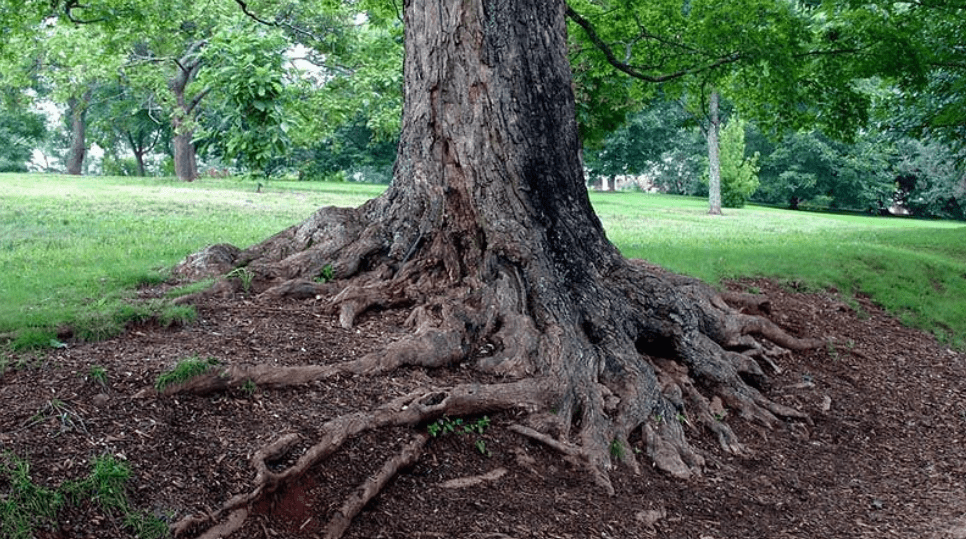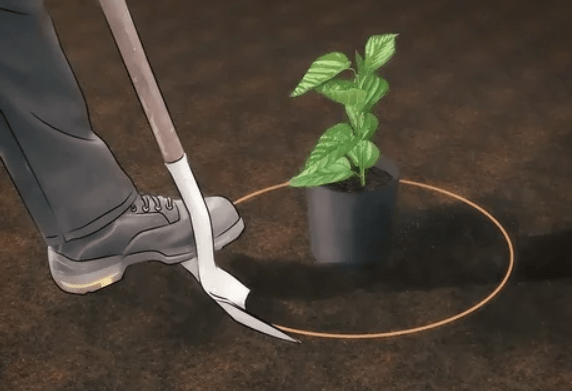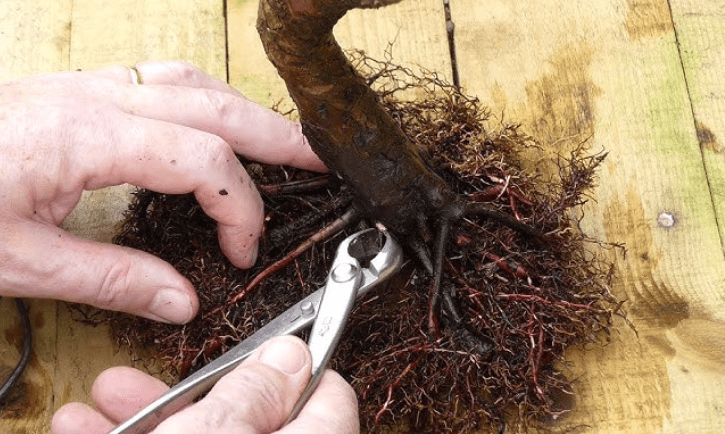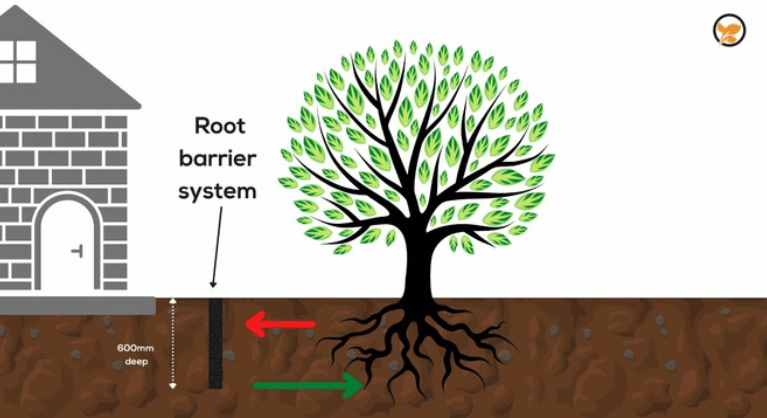
Managing Mulberry Tree Roots: Tips for Healthy Growth
Mulberry tree roots are a crucial aspect to consider when planting and maintaining these popular trees. Understanding the behavior and management of mulberry tree roots is essential for ensuring healthy growth and preventing potential issues in your garden. In this guide, we will explore the characteristics of mulberry tree roots, their impact on your garden, and practical tips for managing them effectively.
Table of Contents
ToggleUnderstanding Mulberry Tree Roots
A. Root system characteristics
Mulberry tree roots are known for being deep and extensive, often reaching up to 10 feet deep and spreading out as far as the tree’s canopy. This means that they have a significant impact on the surrounding soil and can compete with other plants for nutrients and water. It’s essential to consider this when planting your mulberry tree and choosing its location in your garden.

Importance of Root Management
A. Impact on tree health
It is absolutely crucial to consider the impact of mulberry tree roots on the surrounding soil and structures when planting and maintaining your garden. These roots can have a significant impact on the health of your tree and can also compete with other plants for essential nutrients and water.
Furthermore, the aggressive growth patterns of mulberry tree roots can cause damage to sidewalks, driveways, and septic tanks if not properly managed. This is why understanding and managing the root system of your mulberry tree is of utmost importance.
By considering these factors and implementing proper root management techniques, you can ensure the health and longevity of your mulberry tree and prevent any potential damage to surrounding structures. So, be mindful of these factors when planting your mulberry tree and be proactive in managing its root system to maintain a healthy and thriving garden.
B. Potential problems caused by unmanaged roots
Potential problems caused by unmanaged roots include root girdling, which can restrict proper water and nutrient uptake, leading to stunted growth and overall decline in tree health. Additionally, unchecked root growth can lead to structural damage to nearby buildings and infrastructure. It is important to take the necessary steps to manage the root system of your mulberry tree to avoid these potential problems and ensure the overall health and stability of your garden. By addressing these concerns and implementing proper root management techniques, you can maintain a beautiful and thriving garden for years to come. Don’t overlook the impact of mulberry tree roots – take proactive measures to protect the health of your tree and your surrounding landscape.

Planting Mulberry Trees with Root Management in Mind
A. Selecting the right site
Selecting the right site for planting your mulberry tree is crucial for its long-term health and success. Consider factors such as soil drainage, sunlight exposure, and proximity to buildings and infrastructure when choosing a location. By carefully selecting the right site, you can prevent potential problems caused by unmanaged roots and ensure that your mulberry tree has the best chance to thrive. Don’t underestimate the importance of proper site selection – it is the foundation for a healthy and vibrant mulberry tree. Choose wisely and set your tree up for success from the start.
B. Soil preparation
Soil preparation is essential for the successful growth of your mulberry tree. Take the time to properly prepare the soil by loosening it and adding organic matter to improve drainage and fertility. This will create a healthy environment for the roots to establish and grow, ultimately leading to a stronger and more resilient tree. Investing in soil preparation now will pay off in the long run with a thriving mulberry tree that will reward you with delicious fruit for years to come. Don’t overlook the importance of soil preparation – it’s the key to a healthy and productive mulberry tree
C. Planting techniques
1. Proper depth and spacing to encourage healthy root development
When planting your mulberry tree, be sure to pay close attention to proper depth and spacing. Planting at the correct depth will allow the roots to establish themselves in the soil and promote healthy growth. Additionally, be mindful of spacing to provide enough room for the tree to spread out and thrive. By following these planting techniques, you set your mulberry tree up for success from the start, ensuring it has the best chance to grow strong and produce abundant fruit. Don’t cut corners when it comes to planting – take the time to do it right and you’ll be rewarded with a healthy and productive tree.

Techniques for Managing Mulberry Tree Roots
A. Regular pruning of roots
Regular pruning of roots is essential for maintaining the health and productivity of your mulberry tree. By periodically trimming back the roots, you can prevent them from becoming overly tangled or overcrowded, which can lead to stunted growth and reduced fruit production. Pruning also encourages the development of a strong, well-balanced root system, ensuring that your tree has the necessary support and access to nutrients and water. Don’t underestimate the importance of managing your mulberry tree roots – it’s a crucial step in ensuring the long-term health and success of your tree. Take the time to properly care for your tree’s roots, and you’ll be rewarded with a bountiful harvest for years to come.

B. Root barriers
Consider installing root barriers to manage the spread of your mulberry tree roots. These barriers are a highly effective way to contain the root system and prevent it from encroaching on other plants, structures, or utilities in your yard. By installing a root barrier, you can control the direction and depth of the roots, minimizing potential damage and preserving the overall integrity of your landscaping. This proactive approach to root management will not only benefit your mulberry tree but also protect the rest of your garden and property. Don’t let unruly roots wreak havoc on your yard – take control with root barriers and enjoy a more manageable and harmonious landscape. Your mulberry tree will thank you for it.

C. Soil management
Amendments and practices to promote healthy root growth are essential for maintaining a thriving and lush landscape. By carefully managing the soil and providing the necessary nutrients and conditions, you can ensure that your plants, including your mulberry tree, have the foundation they need to flourish.
Proper soil management involves incorporating organic matter, such as compost or mulch, to improve soil structure and fertility. This provides essential nutrients for root development and promotes beneficial microbial activity in the soil. Additionally, regular aeration and loosening of compacted soil can prevent root suffocation and allow for better water and nutrient absorption.
By implementing these soil management practices, you can create an optimal environment for healthy root growth, ensuring that your mulberry tree and other plants have the support they need to thrive. Don’t underestimate the power of soil management in maintaining a vibrant and resilient landscape. Your efforts will be rewarded with a beautiful and flourishing garden for years to come.
Dealing with Invasive Roots
A. Identifying invasive root behavior
Identifying invasive root behavior is crucial in maintaining the health and stability of your garden. Invasive roots can wreak havoc on surrounding plants, structures, and underground utilities, causing costly and irreversible damage. By being vigilant in identifying and addressing invasive root behavior, you can protect your garden and preserve its beauty. Regular monitoring and proactive measures, such as root barriers and selective pruning, can help manage and control invasive root growth. Don’t let invasive roots jeopardize the integrity of your garden. Take action now to protect your landscape and ensure its longevity.
B. Mitigating root spread
1. Methods to control and redirect invasive roots
Invasive root spread can be a real headache for any garden or landscape. But there are ways to control and redirect those pesky roots to prevent damage and preserve the beauty of your outdoor space.
One effective method is the use of root barriers. These barriers act as a physical barrier to prevent the spread of invasive roots into areas where they are not wanted. By installing root barriers, you can control the direction of root growth and protect surrounding plants, structures, and utilities from potential damage.
Selective pruning is another powerful tool in managing invasive root spread. By regularly pruning back invasive roots, you can prevent them from encroaching on other plants and structures. This not only helps to control their spread but also promotes healthier and more manageable growth.
By implementing these proactive measures, you can effectively manage and control invasive root growth, protecting your garden and preserving its longevity. Don’t let invasive roots wreak havoc on your outdoor space. Take action now to protect and maintain the beauty of your landscape.
C. Repairing damage caused by roots
1. Addressing issues with structures and other plants
Addressing issues with structures and other plants by controlling invasive root growth is crucial for maintaining the integrity of your outdoor space. By repairing damage caused by roots, you can ensure that your garden remains a beautiful and functional space for years to come. Don’t let invasive roots compromise the health and beauty of your landscape. Take the necessary steps to repair and protect your outdoor space from the damaging effects of invasive roots. Your garden will thank you for it.
Promoting Healthy Root Development
A. Watering practices
Promoting healthy root development through proper watering practices is essential for the overall health and longevity of your plants. By ensuring that your plants receive the right amount of water, you can help them develop strong and deep root systems that will support their growth and resilience. Don’t let your plants suffer from shallow and weak roots due to poor watering habits. Take the time to water them properly and promote healthy root development for a thriving garden. Your plants will thank you for it with vibrant and lush growth.
B. Fertilization
Promoting healthy root development through proper fertilization is crucial for the success of your plants. By providing them with the necessary nutrients, you can support their root growth and overall health. Don’t let your plants struggle with nutrient deficiencies that can lead to weak and stunted roots. Invest in high-quality fertilizers and feed your plants regularly to ensure they have everything they need to develop strong and robust root systems. With proper fertilization, your plants will be able to access the nutrients they need to thrive and flourish. Don’t underestimate the power of fertilization in promoting healthy root development. Your plants will thank you for it with bountiful blooms and abundant foliage.
C. Mulching
Mulching is also an important aspect of plant care that cannot be overlooked. Mulching provides a layer of protection for the soil, regulates temperature, and conserves moisture, all of which are vital for root health. By mulching your plants, you are creating an ideal environment for root growth and ensuring that they have the best possible chance to thrive. So, don’t wait any longer – invest in fertilizers and mulch today and give your plants the support they need to reach their full potential. Your plants will thank you for it with vibrant, healthy growth.
Monitoring and Maintenance
A. Regular inspections
Regular inspections are crucial for maintaining the health and well-being of your plants. By monitoring your plants regularly, you can catch any potential issues early on and prevent them from becoming major problems. This can save you time, money, and the stress of dealing with a full-blown plant emergency. Not only that, but regular inspections also allow you to give your plants the individualized care they need, ensuring that they are receiving the proper nutrients, water, and attention. So, don’t overlook the importance of regular inspections – your plants will thank you for it by thriving and looking their best.
B. Seasonal care
Seasonal care is essential for maintaining the long-term health and vitality of your plants. Each season brings different challenges and needs for your plants, and by providing the appropriate care during each season, you can ensure that your plants continue to thrive year after year. From pruning and fertilizing in the spring to protecting from frost and providing enough water in the summer, each season requires specific attention to keep your plants healthy. By staying on top of seasonal care, you can prevent issues such as disease, pest infestations, and nutrient deficiencies, ultimately saving you time and money in the long run. So, don’t neglect the importance of seasonal care – your plants will reward you with vibrant growth and beautiful blooms.
Case Studies and Expert Advice
A. Examples of successful root management
Root management is crucial for ensuring the health and stability of your plants. By implementing successful root management strategies, you can promote strong root growth, improve nutrient uptake, and minimize the risk of root-related issues such as root rot and waterlogged soil. One successful example of root management is the use of root barriers to control the spread of invasive plant roots and prevent damage to hardscapes and structures. Additionally, strategic planting and regular root pruning can help to maintain a healthy root system and prevent overcrowding.
Expert advice on root management also emphasizes the importance of proper soil preparation, including loosening compacted soil and adding organic matter to improve root development. In addition, utilizing appropriate watering and drainage techniques can help to prevent waterlogged soil and encourage healthy root growth. By following these successful examples and expert advice on root management, you can ensure the long-term health and stability of your plants. Don’t underestimate the impact of effective root management – your plants will thank you with strong, healthy growth.
In conclusion, managing the roots of your mulberry tree is crucial for its healthy growth and longevity. By following our tips and techniques, you can ensure that your tree thrives and continues to provide beauty and shade for years to come. Don’t neglect the roots of your tree – they are the foundation of its health and vitality. With proper care and attention, you can enjoy a beautiful and thriving mulberry tree in your yard.
Frequently Asked Questions (FAQs)
The best way to manage the roots of your mulberry tree is to regularly prune them to prevent overcrowding and promote healthy growth. You can also use organic mulch around the base of the tree to help retain moisture and keep the roots healthy.
It’s recommended to prune the roots of your mulberry tree every 2-3 years to prevent them from becoming too crowded and to encourage new growth.
To prevent root rot, make sure the soil around your mulberry tree is well-drained and avoid overwatering. You can also use a fungicide if you notice any signs of root rot.
Yes, you can use a balanced fertilizer to promote healthy root growth in your mulberry tree. Be sure to follow the instructions on the fertilizer package and avoid over-fertilizing.
Mulberry trees can be susceptible to root-knot nematodes, so it’s important to keep an eye out for any signs of infestation. You can use organic pest control methods to manage these pests and keep your tree roots healthy.
Some signs of unhealthy mulberry tree roots include wilting or yellowing leaves, stunted growth, and signs of root rot. If you notice any of these signs, it’s important to take action to address the issue and promote healthy root growth.
Transplanting a mulberry tree can be challenging, but it is possible to do so without damaging the roots if done carefully. Be sure to dig a wide and shallow hole around the tree to minimize root disturbance.
In addition to regular pruning and proper watering, it’s important to monitor the health of your mulberry tree roots and address any issues promptly. Providing proper care and maintenance will help ensure healthy growth for your mulberry tree.
